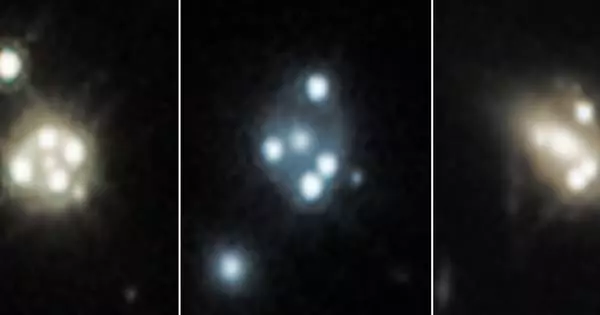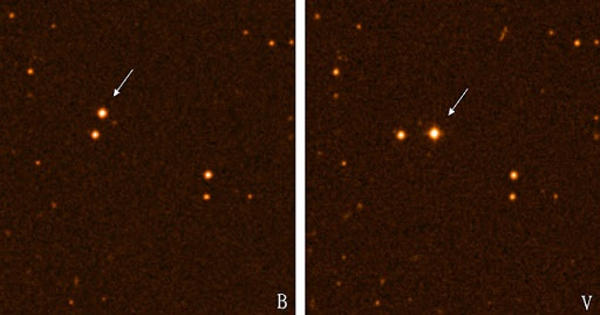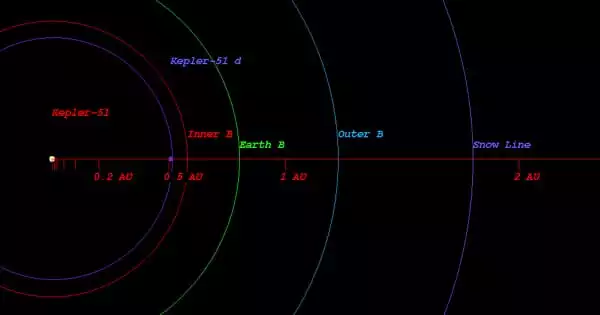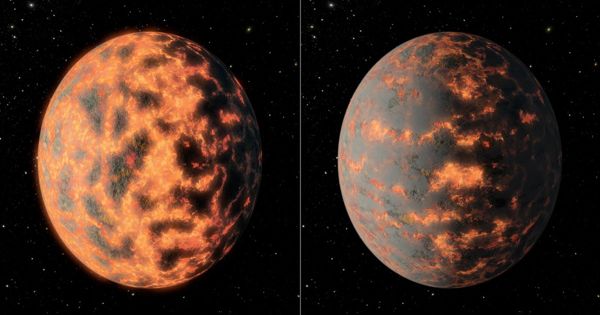While studying two exoplanets in a nearby star system, the CHEOPS satellite discovered the system’s third known planet crossing the star’s face. As the scientific team points out, this transit reveals exciting details about a rare planet “with no known equivalent.”
Every day, something or someone enters a camera’s field of view unexpectedly while taking a photograph, which is known as a photobomb. Sometimes it’s a friend, sometimes it’s a stranger, and sometimes it’s a bird. A whole planet, on the other hand, is extremely rare. This is exactly what happened while the Swiss-led space telescope CHEOPS was photographing a planetary system 50 light-years away.
A planet like no other
The planetary system is located in the constellation Lupus (Latin for Wolf), and revolves around a star known as Nu2 Lupi, which is visible with the naked eye (but not from Switzerland). Swiss astronomers announced the discovery of three exoplanets orbiting this bright, Sun-like star in 2019. The three exoplanets have masses between Earth and Neptune (17 times the Earth) and orbit their parent star in 12, 28, and 107 days, respectively.
“What distinguishes these exoplanets is that we can see them passing just in front of their star; they’re said to ‘transit,'” says Yann Alibert, professor of astrophysics at the University of Bern and co-author of the study published in Nature Astronomy. “We already knew that for the two inner planets, which is why we directed CHEOPS to the system in the first place. However, because the third planet is so far from the star, no one expected to see its transit! “Alibert continues. In fact, the greater the planet’s distance from its star, the less likely it is to transit.
While studying two exoplanets in a bright nearby star system, the CHEOPS satellite has unexpectedly spotted the system’s third known planet crossing the face of the star.
This was a game-changer because it was the first time an exoplanet with a revolution period of more than 100 days – which corresponds to a distance from the star somewhere between that of Mercury and Venus from the Sun was spotted transiting a star bright enough to be seen with the naked eye.
“The amount of stellar radiation reaching the planet is mild in comparison to many other discovered exoplanets due to its relatively long period. The less radiation a planet is exposed to, the less it changes over time. As a result, a planet with a long period of time may have retained more information about its origin,” says David Ehrenreich, professor at the University of Geneva and CHEOPS mission scientist who co-signed the study. However, the few such exoplanets discovered thus far have orbited faint stars. In other words, because so little of their light reaches Earth, they are difficult to study. “Not this time,” says the scientist, “because its bright host star is quite close to us.” This makes it a gold target for future research because there is no known equivalent,” Ehrenreich adds.

Further insights from other telescopes
The CHEOPS high-precision measurements show that the third planet, nu2 Lupi d, is about 2.5 times the size of Earth and nearly 9 times its mass. Laetitia Delrez, a visiting researcher at the University of Geneva and lead author of the study, was able to accurately characterize the density and composition of the planet and its neighbors by combining these measurements with archival data from other observatories and numerical models developed by the University of Bern.
“The innermost planet is mostly rocky,” Delrez explains, “while the outer two appear to be encased in envelopes of hydrogen and helium gases beneath which they hold large amounts of water.” In fact, each planet has far more water than Earth: water accounts for one-quarter of each planet’s mass, compared to less than 0.1 percent for Earth. This water, however, does not exist as a liquid, but rather as high-pressure ice or high-temperature steam, rendering the planets uninhabitable. However, these discoveries could only be the beginning.
“Now that we’ve discovered and precisely measured the properties of all three planets, the next step is to study them with larger and more powerful instruments than CHEOPS, such as the Hubble Space Telescope or its successor, the James Webb Space Telescope. They may reveal additional information, such as the composition of the atmosphere “Ehrenreich says Planet d will become the poster child for exoplanets with a mild-temperature atmosphere orbiting a star similar to the Sun, owing to its overall properties and orbit.
















